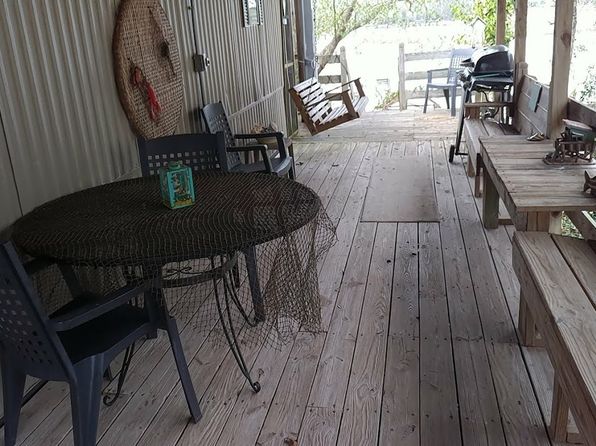
It is located just a few miles south of Nags Head. Coquina Beach is the only designated beach area within the Cape Hatteras National Seashore with facilities (toilets, changing rooms, outdoor showers) and a large parking lot. In other places, particularly on Pea Island, cars parked by the side of the road where paths lead across the dunes. There were some small parking areas on the stretch south of Rodanthe, with walkways across the dunes. In most places, the ocean-side water is not visible from the road (Route 12) because of the height of the dunes, although the distance from the road to the shoreline is no more than a few hundred yards in most places. Except for the areas encompassed by the towns, the Seashore is undeveloped. A few small towns such as Rodanthe, Avon, and Buxton lie within the National Seashore. Bonner Bridge connects the northern end of Pea Island to the northern portion of the National Seashore (southern end of Bodie Island). Pea Island is embedded in the National Seashore. The ferry between Hatteras and Ocracoke is free, but we did not take it due to time constraints on the day we rode there from where we were staying in Kill Devil Hills. The National Seashore begins at the border with Nags Head and stretches south for about 60 miles to the Hatteras Ferry Terminal that goes to Ocracoke – and then a further 10 miles or so on Ocracoke Island. As beach-lovers, our first order of business was to check out the Cape Hatteras National Seashore. Retrieved March 26, 2015.In October, my husband and I visited the Outer Banks for the first time. ^ Data Access and Dissemination Systems (DADS).National Oceanic and Atmospheric Administration. ^ "NOWData - NOAA Online Weather Data".^ a b "Geographic Identifiers: 2010 Demographic Profile Data (G001): Shallotte town, North Carolina".Geological Survey Geographic Names Information System: Shallotte, North Carolina About 4.7% of families and 10.2% of the population were below the poverty line, including 3.4% of those under age 18 and 7.7% of those age 65 or over. The per capita income for the town was $23,397. Males had a median income of $36,591 versus $30,000 for females. The median income for a household in the town was $41,616, and the median income for a family was $52,284. For every 100 females age 18 and over, there were 79.1 males. For every 100 females, there were 85.8 males. The town population was distributed with 22.8% under the age of 20, 22.5% from 20 to 40, 32.2% from 40 to 65, and 22.4% aged 65 and over. The average household size was 2.24 and the average family size was 2.78. 31.7% of all households were made up of individuals, and 14.5% had someone living alone who was 65 years of age or older. There were 1,583 households, out of which 23.2% had children under the age of 18 living with them, 46.5% were married couples living together, 12.1% had a female householder with no husband present, and 37.8% were non-families. Hispanic or Latino of any race were 4.8% of the population. The racial makeup of the town was 85.2% White, 9.3% African American, 1.3% Asian, 0.6% Native American, 2.0% from other races, and 1.6% from two or more races. There were 1,908 housing units with a density of 353.3 per square mile (136.3/km 2). The population density was 680.5 inhabitants per square mile (262.7/km 2). Climate Ĭlimate data for SHALLOTTE AG, NC, 1991-2020 normalsĭemographics Historical population CensusĢ020 census Shallotte racial composition RaceĪs of the 2020 United States census, there were 4,185 people, 1,682 households, and 1,066 families residing in the town.Īs of the census of 2010, there were 3,675 people, 1,583 households, and 985 families living in the town. (Main Street is designated US 17 Business.) US 17 leads northeast 33 miles (53 km) to Wilmington and southwest 38 miles (61 km) to Myrtle Beach, South Carolina.Īccording to the United States Census Bureau, the town has a total area of 9.3 square miles (24.2 km 2), of which 9.3 square miles (24.1 km 2) is land and 0.08 square miles (0.2 km 2), or 0.72%, is water. Route 17 (Ocean Highway) passes through the town, bypassing the town center to the northwest. Shallotte is located in west-central Brunswick County. It was demolished in 2017 and a Zaxby's was built in the same lot in the early summer of 2017.

Ī former Hardee's restaurant, located on Main Street, was used as a filming location for the robbery scene in the Melissa McCarthy film Tammy.

Shallotte was incorporated as a town in 1899. The Shallotte River passes through the town.

The population was 3,675 at the 2010 census. Shallotte ( / ʃ ə ˈ l oʊ t/ shə- LOHT) is a town in Brunswick County, North Carolina, United States.


 0 kommentar(er)
0 kommentar(er)
